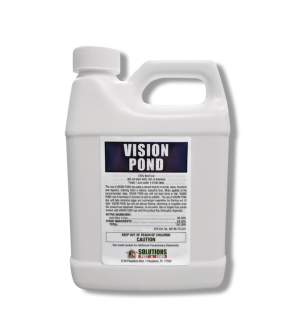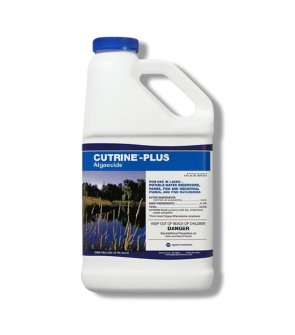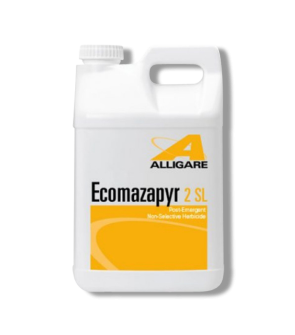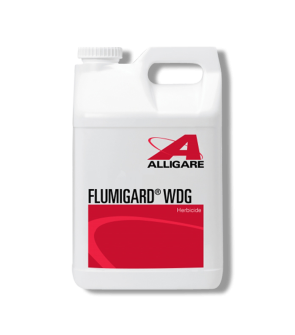Gain access to personalized product screening, the best pricing, rewards, and more!
Most Effective Products
Common Aquatic Weeds in Ponds
As many pond owners know, nuisance and invasive aquatic weeds are a eyesore and often difficult to control. Not to mention they ruin swimming, fishing, and other water activities with their thick vegetation spread in the water.
Many ponds often experience these type of aquatic weeds: algae, cattail, coontail, pondweed and water lily. While aquatic plants are important to the ecosystem there are some that can damage, especially when overgrown in population size.
If you are not seeing a aquatic weed listed here, then contact our customer service team by phone, email, or in-person for professional recommendations.
Algae
Algae plays an important part in the food chain for zooplankton and aquatic fish, but heavy blooms can overtake ponds quickly. They can also make easy tasks such as fish upkeep and swimming difficult.
Identification

General characteristics of algae are a slimy, greasy texture that look like large clumps or spots in water. They can range from green, reddish-brown, or yellow in coloration.
Inspection
Algae can be found in many places throughout ponds from the edges, bottom, and surface of water. They can also be found on the rocks within these sites.
Treatment
Step 1: Apply Cutrine Plus Algaecide

Determine how much Cutrine Plus Algaecide to use by measuring the acre-feet of the pond. To do this, measure the length, width, and average depth of the water in feet then multiply these three values together (length X width X length). Take that total and divide it by one acre to find the acre-feet (total / 43,560 = acre-feet).
Before applying, dilute the required amount of this product with enough water to ensure even distribution with the type of equipment being used. Typical dilution range is 9:1 when using backpack-type sprayer or up to 50:1 when using water pump equipment or large tank sprayers.
A general algae application will use 0.6 gallons of Cutrine Plus Algaecide per acre-ft.
Break up floating algae mats manually before spraying or with force of power sprayer if one is use.
Treat only 1/3 to ½ of the water body at a time to avoid fish suffocation caused by oxygen depletion from decaying algae.
Cattail
Cattails are aggressively growing aquatic weeds that quickly overtake water sites. Due to their dense growth habits they cause desirable aquatic vegetation to be choked out.
Identification
Cattail are tall, stiff plants that reach up to 10 feet in height. The leaves are alternate and sponge-like that bears the resemblance of brown cigars. They are usally found in dense stands that look like tall, thick grass blades.
Inspection

Treatment
Step 1: Apply Ecomazapyr 2 SL Herbicide

Determine how much Ecomazapyr 2 SL Herbicide to use by measuring the square footage of the treatment area. To do this, measure the length and width of the treatment area in feet then multiply them together. For acreage, take the square footage and divide it by one acre.
Apply 2-4 pints of Ecomazapyr 2 SL Herbicide per acre.
We recommend using a backpack sprayer or spray rig to spray evenly across the surface of the water where the weed is present.
Do not treat more than one-half the surface area of the water in a single operation and wait at least 10 to 14 days between treatments. Begin treatments along the shore and proceed outward in bands to allow aquatic organisms to move into untreated areas.
Coontail
Coontails not only cause ponds waters to be unaesthetical pleasing, but can quickly overtake the entire area with dense free-floating mats.
Identification
Coontail is a submerged, free-floating aquatic plant that can grow between 9 to 15 feet long. Because it has no roots it will they will float in dense mats beneath the water surface. Stems are slender, densely branched, and have compound leaves that are forked and flat.
Inspection
Coontail mainly infest ponds with little movement and no heavy streaming. These aquatic plants are found beneath the surface of the water up to a depth of 20 feet.
Treatment
Step 1: Apply Flumigard WDG (Clipper) Aquatic Herbicide

Determine how much Flumigard WDG (Clipper) Aquatic Herbicide Flumioxazin to use by measuring the square footage of the treatment area. To do this, measure the length and width of the treatment area in feet then multiply them together. For acreage, take the square footage and divide it by one acre (square footage / 43,560 sq. ft. = acre).
For surface applications against coontail, use 6 to 12 oz. of Flumigard WDG (Clipper) Aquatic Herbicide Flumioxazin per 30 gallons of water per acre.
To ensure thorough coverage, a boom sprayer or larger application equipment may be required.
In areas with dense weed vegetation, only treat ½ the water body at one time and wait 10-14 days before treating the remaining area.
Pondweed
Dense infestations of pondweeds can cover the surface and water depth enough to the point of slowing of oxygen creation in water. As a result, existing aquatic life can be harmed.
Identification
Pondweed has many different species so we will focus on a few general characteristics to easily identify them. Leaves may be linear, ovate, or lance-shaped and have small flower clusters on spikes.
Inspection

Treatment
To control pondweeds, we recommend using Flumigard WDG (Clipper) Aquatic Herbicide which can be used to treat quiescent or slow-moving ponds and golf course ponds.
Determine how much Flumigard WDG (Clipper) Aquatic Herbicide Flumioxazin to use by measuring the square footage of the treatment area. To do this, measure the length and width of the treatment area in feet then multiply them together. For acreage, take the square footage and divide it by one acre (square footage / 43,560 sq. ft. = acre).
To control pondweeds on the surface of water and beneath it we recommend performing a subsurface application.
You may mix and apply this product in a boom sprayer or backpack sprayer. Treatment of pondweeds underneath the water may require trailing hoses.
Apply 6 to 12 oz. of Flumigard WDG (Clipper) Aquatic Herbicide per 30 gallons of water per acre.
Broadcast the product across the surface of the water once mixed.
If aquatic vegetation is dense, treat submersed weeds in sections to avoid a rapid decrease in dissolved oxygen
Water Lily
While water lilies appear aesthetically pleasing due to the flowers, they are also invasive as they can reduce the amount of oxygen in water with their thick growth habits.
Identification
Water lillies are large floating cicular shaped plants with large floating leaves that grow above water. These leaves will have large flowers on them and have a slid on the side that moves toward the middle.
Inspection
Water lillies will grow throughout freshwater ponds that have slow-moving waters and little disturbance.
Treatment
Step 1: Apply 2,4-D Amine Selective Post-Emergent Herbicide
2,4-D Amine Selective Post-Emergent Herbicide is a easy to use post-emergent herbicide that will control weeds both in land and aquatic sites like ponds.
Before application, coordination and approval of local and state authorities may be required, either by letter or agreement or issuance of special permits for aquatic applications.
Determine how much 2,4-D Amine Selective Post-Emergent Herbicide to use by measuring the square footage of the treatment area. To do this, measure the length and width of the treatment area in feet then multiply them together (length X width = square footage). For acreage, take the square footage and divide it by one acre (square footage / 43,560 sq. ft. = acres).
Apply 2 to 4 quarts of 2,4-D Amine Selective Post-Emergent Herbicide per 100 gallons of water per acre.
Use power operated sprayers with boom or spray gun mounted on boat, tractor or truck to treat the surface of the pond water.
If treatments must be applied later in the season when the weed mass is dense and repeat treatments are needed, apply product in lanes, leaving buffer strips which can then be treated when vegetation in treated lanes has disintegrated.
During the growing season, weeds decompose in a 2 to 3 week period following treatment.
Key Takeaways
What Are the Most Common Pond Weeds
- The most common pond weeds are algae, cattail, coontail, pondweed, and water lilies.
Are Weeds Bad For A Pond?
- When aquatic weeds have reached a point of severe overgrowth, the oxygen can become depleted leading to fish and other desirable aquatic plant death.
Do Fish Eat Pond Weeds
- Some types of fish may eat pond weeds, but not enough to the point to depend on them for solemn aquatic weed control.



















